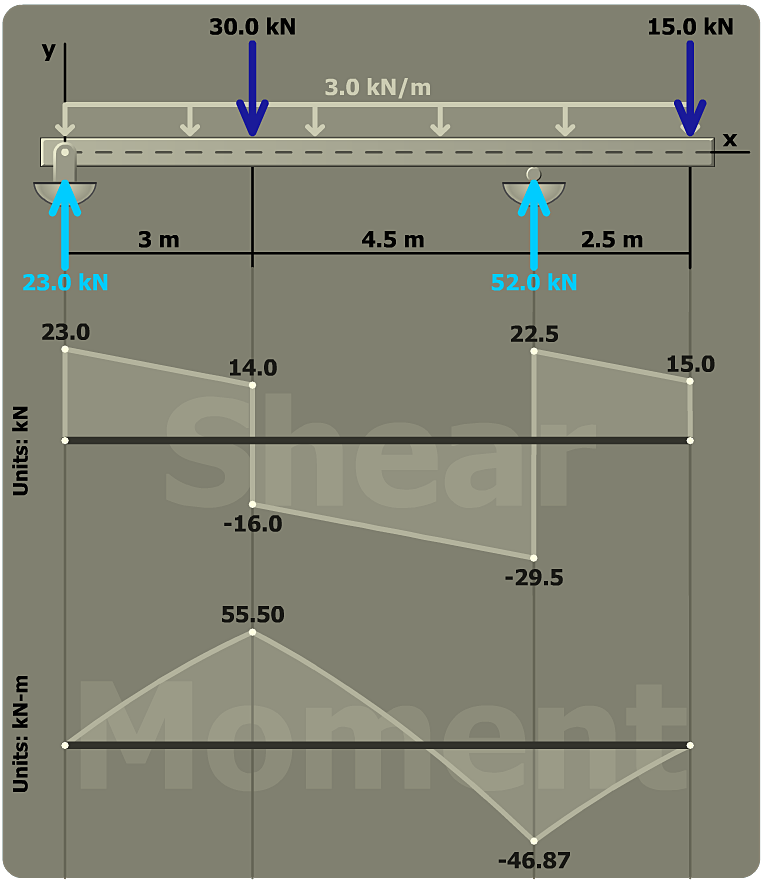
In constructing the bending-moment diagram, start at the left end of the beam (where x = 0) and proceed across the beam to the right. Each bending-moment diagram should start at M = 0 at the left end of the beam and return to M = 0 at the right end. This always occurs in a properly constructed diagram.
If the moment diagram does not return to M = 0 at the right end of the beam, check your equilibrium calculations to make sure that you've correctly determined the beam reactions.